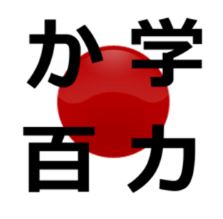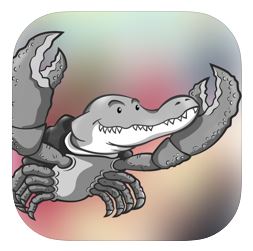Best Apps for Learning Japanese
There are many reasons to learn Japanese – to be able to watch anime without subtitles, to be able to build better business relationships, to challenge yourself, or maybe you’re going there on holiday.
Whatever your reason, trying to learn Japanese as a native English speaker can be very overwhelming. There is very little Japanese that is similar to English, you even have to learn three new systems of writing.
So where do you start? Perhaps you’ve looked into getting a personal tutor before realizing how expensive it is.
Perhaps you’ve bought yourself a textbook that you’ve struggled to get your head around. The good news is… there’s an app for that!
Many language learning apps are designed by professional educators who have spent years studying the best way to teach a new language.
We love apps for language learning because they combine that knowledge with the most up to date technology.
The apps will let you track what vocabulary you’ve learned, as well as track what you’re struggling with. And as a bonus, they’re way cheaper than a personal tutor.
We’ve put together this article, to help you find the best Japanese language learning app for you.
We’ve included a list of our five favorite apps, as well as a buyer’s guide and FAQs section so that you can get started on your Japanese journey as soon as you’ve finished reading this piece.
In a hurry?
Our top pick is the Obenkyo app – this app will take you from a very beginner to being confident in over 2500 Kanji and 14,500+ words. It also teaches Katakana and Hiragana.
This app uses quizzes and flashcards to help you build your vocabulary. Vocabulary is stored in lists that are easy to access so it is easy to keep track of what you’ve learned.
Originally designed to help students prepare for the JLPT exams, you can also sort vocabulary by the levels of the exam.
This app has a world-class handwriting tracker that will help you to learn how to write in Japanese, and do it well. It will correct form, shape, and stroke order.
It is unrivaled in the collection of vocabulary flashcards its offers. Although it did not originally offer a huge amount of grammatical teaching, it has recently imported grammatical guides from another well-reviewed app.
Best Apps for Learning Japanese – Reviews
Our Pick
Obenkyo
Our rating:
Obenkyo is our top pick for a few reasons.
Firstly, this app offers a mind boggling number of vocabulary flashcards (over 14,500) and Kanji writing exercises (over 2000).
If you’re looking to build up your Japanese vocabulary this app has everything from beginner to advanced in one place.
This app uses quizzes, writing exercises, Flashcards, tables, games, and drawing exercises to help you learn.
One of the highlights of this app is its world-class handwriting tracker. This acts like a personal Kanji tutor and will help you to build up your Japanese writing skill in the correct way. It tracks form, shapes, and stroke order.
The Obenkyo app was originally developed to aid students in studying for the JLPT exams. If that is something you need the app for, you can filter the activities and vocabulary lists by exam level.
Although originally not offering a lot of grammar work within the app, Obenkyo has recently ported over the grammar guides from Tae Kim’s Guide to Learning Japanese (a name you’ll see pop up a little later).
You may want to find something more grammar oriented to supplement your learning with this app.
Unfortunately, this app is only available on Android – Apple users should check out our next choice, or Kanji Study.
Pros
- Kanji practice
- World-class handwriting tracker
- Basics to Pro
- Built around JLPT exams
- Uses pictures, drawing, typing
- Uses quizzes
Cons
- Android only
- Less grammar
WaniKani
Our rating:
WaniKani is the guide to learning Japanese produced by the Japanese Ministry of Education. This is a great app for those who have learned the basics and are looking to improve their skills.
This app includes practice in Kanji drawing and drills you on following the correct brush strokes.
This makes up for one of the harder sections of Japanese learning, which is trying to learn Kanji without a writing tutor. The app includes 2000 Kanji and over 6000 words.
The app also includes pronunciation guides recorded by native speakers to allow the user to get to grips with how the words sound whilst practicing their Kanji.
This app is one of the best Kanji and vocabulary building apps out there, however, it does very little in the way of grammar.
It is worth having for the Kanji brush stroke practice alone, however, it is best to use it in combination with either our 1st or 3rd choices on this list.
Pros
- Two years of content
- Designed by the Japanese Government
- Kanji practice
- Builds vocabulary
- Uses sound, drawing, typing
- Apple and Android
Cons
- Monthly fee after the first three levels
- Won’t get you fluent
- Should understand Hiragana and Katakana before starting
- Not focused on grammar
Lingodeer is an award-winning app that offers courses in Korean, Chinese, and Japanese.
The absolute best thing about this app is that as you’re learning new vocabulary the app automatically makes a set of flashcards within the app for you.
The more you learn, the more it adds. This means you don’t have to get another app to make these flashcards or physically make them yourself.
This app is designed to work with all types of learners – it uses pictures, sound clips, reading, and typing to engage as many parts of the brain as possible.
Like Duolingo, one of our later choices, this app is designed by learning experts to help people learn a new language.
Everything is laid out in an easy to follow way, and the progression between lessons doesn’t feel too steep.
If there is one area you are really struggling with, Lingodeer allows you to take part in targeted lessons to improve your skills.
Pros
- Uses pictures, words, sounds
- So visually pleasing
- Award-winning
- Tracks what you’ve learned
- Grammar focus
- Android and Apple
Cons
- Free for the first couple of lessons, then paid
Tae Kim’s Guide to Learning Japanese
Our rating:
This is the app for those of you who like things to be organized. Tae Kim’s Guide to Learning Japanese pitches itself as a complete guide to Japanese. And it’s free!
Designed by professional Japanese, Tae Kim, this app combines techniques used in Japanese schools and tips for second language learners to create a well-structured system that will push you (in a good way!).
Not only does this app help you build your spoken and kanji vocabulary, but it also does this whilst giving you the grammatical contexts of these words.
The app also provides a vast Japanese dictionary and everyone’s favorites – conjugation tables.
This is a free app that provides you with the content you could want, however, it isn’t very visually engaging. So those of you who are visual learners might not find this one very helpful.
This isn’t designed to be a game or to be a fun activity, it is a pragmatic tool to help you improve your Japanese language skills.
Pros
- Streamlined and easy to navigate
- Complete guide (from beginner to fluent)
- Grammar focused
- Dictionary included
- Built by a Japanese teacher
Cons
- It isn’t very visually engaging
- Apple only
Duolingo (Japanese)
Our rating:
Our final choice is the Japanese course on Duolingo. Duolingo is one of the most downloaded language apps in the world and for good reason.
Since its launch, Duolingo has become a non-profit organization that provides free education across the world using its advertising and subscription revenue.
Duolingo has been developed by language learning experts and its courses are built around the science of education. This is why it is one of the only non-Japanese-specific apps on our list.
Duolingo makes the most of the majority of your senses to help you form the learning pathways in your brain. You will be asked to speak, listen, recognize pictures, and type out your vocabulary.
Although the app does teach a small amount of grammar, it does not cover enough to provide a good grip on the language.
To get a true understanding of Japanese you would have to use this app in combination with another lesson system.
Pros
- Well-researched lessons
- Practice using all the senses
- Free option
- The subscription option supports education charities across the world
- Apple and Android
Cons
- Not enough grammar taught
Best Apps for Learning Japanese – Buyers Guide
Free or Paid
The first choice that you will have to make is, do you want a free app for learning Japanese, or are you happy to use a paid one?
There are great apps out there in both categories so this is down to your personal preference.
For Travel or Fluency
Your reason for learning Japanese will affect the type of app that you will be looking for. A more in-depth app will be required if you are looking to become fluent in Japanese.
However, if you are looking to learn a little before you travel to the country you won’t need a program as expansive. You will want to focus on travel-related vocabulary.
Kanji
The earlier you can get to grips with Kanji and the other Japanese writing systems in your Japanese journey the better.
Japanese has three main writing systems Kanji (words of Japanese or Chinese origins), Katakana (foreign words translated into Japanese), and Hiragana (to put it simply covers everything else).
These three written forms of the language are a part of the reason why Japanese has a reputation for being such a difficult language to learn.
Particularly as there are so many possible Kanji for a student to learn.
Grammar
Finally, you want to make sure that you get an app that doesn’t only teach you vocabulary.
To be able to speak a language properly you must also have a good grasp of the grammatical rules and structure of language.
Frequently Asked Questions
Is learning Japanese hard
Learning a language is never easy, however, people who have grown up learning Latin based languages may find Japanese a complex language.
But as with everything, the more you practice Japanese, the easier you’ll find it.
Learning through a structured system like an app or language class will help speed up the process as they are often designed by experts in language learning.
Are Writing and Speaking Japanese connected
It is possible to learn to write or speak Japanese without learning the other. To a non-native speaker, the two may seem unconnected, but that is not true.
If you want to truly learn the language you will need to learn the written language as well as the spoken one. As you do this, you will begin to see the connections between the two.
Should I learn Romaji?
Romaji is a version of Japanese where Latin letters are used to represent the sounds of Japanese words. It is often referred to as a shortcut to learning Japanese.
However, nearly all experts on the Japanese recommend avoiding Romaji as it actually has very little to do with the Japanese language and will encourage the learner to develop bad habits.
Romaji is only used by English speakers trying to learn Japanese and has no bearing on the language itself.







